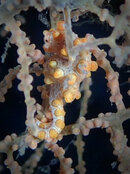DivrBikr
Registered
- Messages
- 66
- Reaction score
- 2
- # of dives
- 100 - 199
~(probably a newbie question)
I've contacted Olympus regarding red lenses for the PT-059 and have come up with nothing. They state they don't have any "in their inventory". With that being said, is there a need for a red lens for depth?
If there is a need for one, are there aftermarket red filters that either slide on or screw on? I'd prefer the slide on to allow for the "wet lens" and the ability to remove it easily at shallower depths.
Any words of wisdom or a place to look?
Thanks,
TJ
I've contacted Olympus regarding red lenses for the PT-059 and have come up with nothing. They state they don't have any "in their inventory". With that being said, is there a need for a red lens for depth?
If there is a need for one, are there aftermarket red filters that either slide on or screw on? I'd prefer the slide on to allow for the "wet lens" and the ability to remove it easily at shallower depths.
Any words of wisdom or a place to look?
Thanks,
TJ






